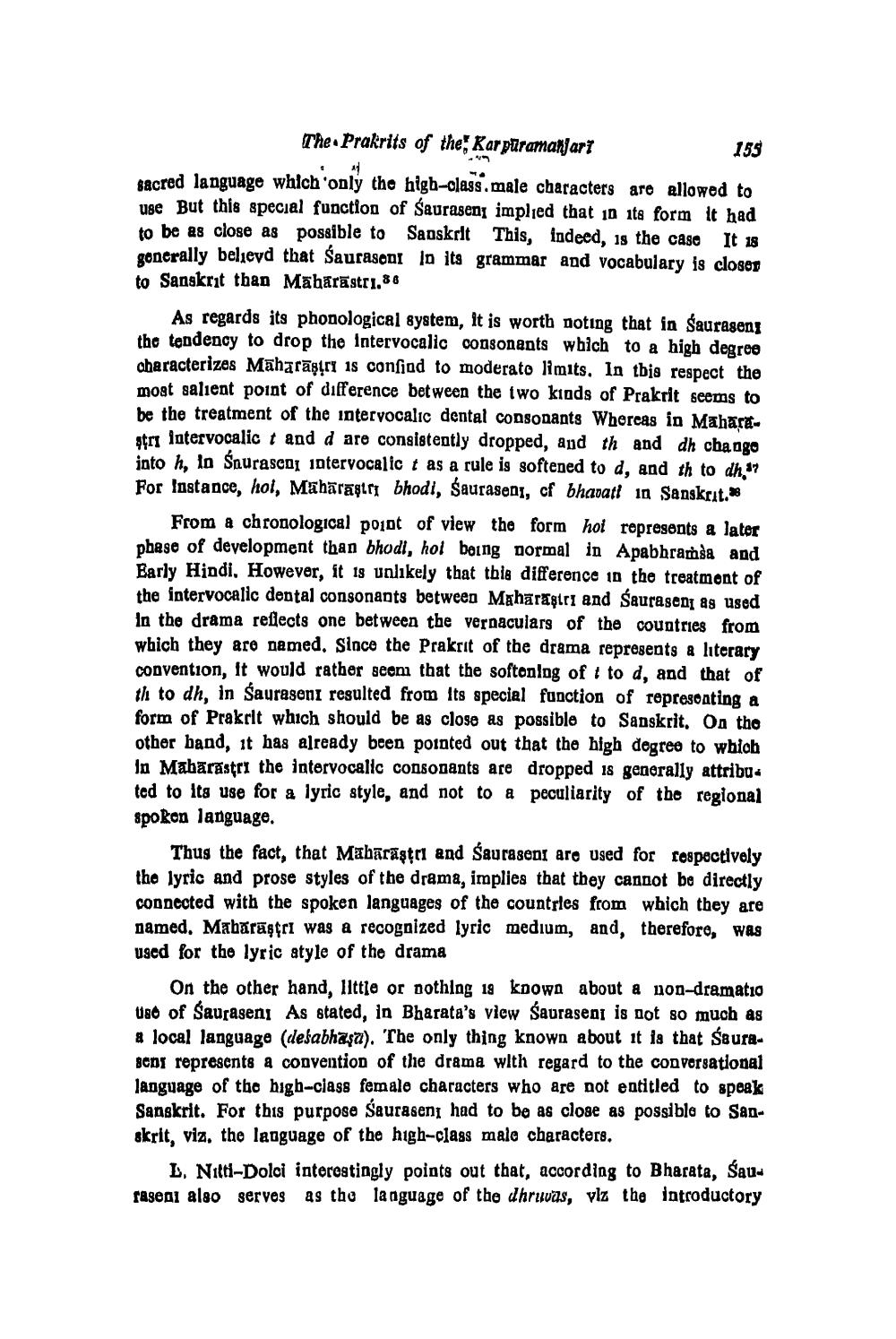________________
The Prakrits of the Kar püramanjari
155
sacred language which 'only the high-olass.male characters are allowed to use But this special function of Sauraseny implied that in its form it had to be as close as possible to Sanskrit This, indeed, is the case It 18 gonerally belieyd that Saurasont lo its grammar and vocabulary is closer to Sanskrit than Māhārāstri. 86
As regards its phonological system, it is worth noting that in Saurasens the tendency to drop the Intervocalic consonants which to a high degree characterizes Maharāştry is confiad to moderato limits. In this respect the moat salient point of difference between the two kinds of Prakrit seems to be the treatment of the intervocalic dental consonants Whereas in Maharstri Intervocalict and d are consistently dropped, and th and dh cha ngo into h, lo Snurasco intervocalic t as a rule is softened to d, and th to dh,07 For instance, hoi, Maharastrı bhodi, Sauraseni, cf bhavati in Sanskrit.
From a chronological point of view the form hot represents a later phase of development than bhodl, hoi boing normal in Apabhramsa and Early Hindi, However, it 18 unlikely that this difference in the treatment of the intervocalic dental consonants between Maharastri and Saurasení ag used In the drama reflects one between the vernaculars of the countries from which they aro named. Since the Prakrit of the drama represents a literary convention, it would rather seem that the softonlng of i to d, and that of th to dh, in Sauraseni resulted from its special function of representing a form of Prakrit which should be as close as possible to Sanskrit, On the other band, it has already been pointed out that the high degree to which in Mabarastrı the intervocallc consonants are dropped is generally attributed to its use for a lyric style, and not to a peculiarity of the regional spoken language.
Thus the fact, that Mahārāştii and Sauraseni are used for respectively the lyric and prose styles of the drama, implies that they cannot be directly connected with the spoken languages of the countries from which they are named, Maharastri was a recognized lyric medium, and, therefore, was used for the lyric atyle of the drama
On the other hand, Ilttie or nothing 19 known about a non-dramatio UBO of Sauraseni As stated, in Bharata's view Saurasen is not so much as a local language (desabhasa). The only thing known about it is that Saurasont represents a convention of the drama with regard to the conversational language of the bigh-class female characters who are not entitled to speak Sanskrit. For this purpose Sauraseni had to be as close as possible to Sanskrit, via, the language of the high-class male characters.
L, Nitti-Dolci interestingly points out that, according to Bharata, Sauraseni also serves as the language of the dhruvas, viz the introductory




